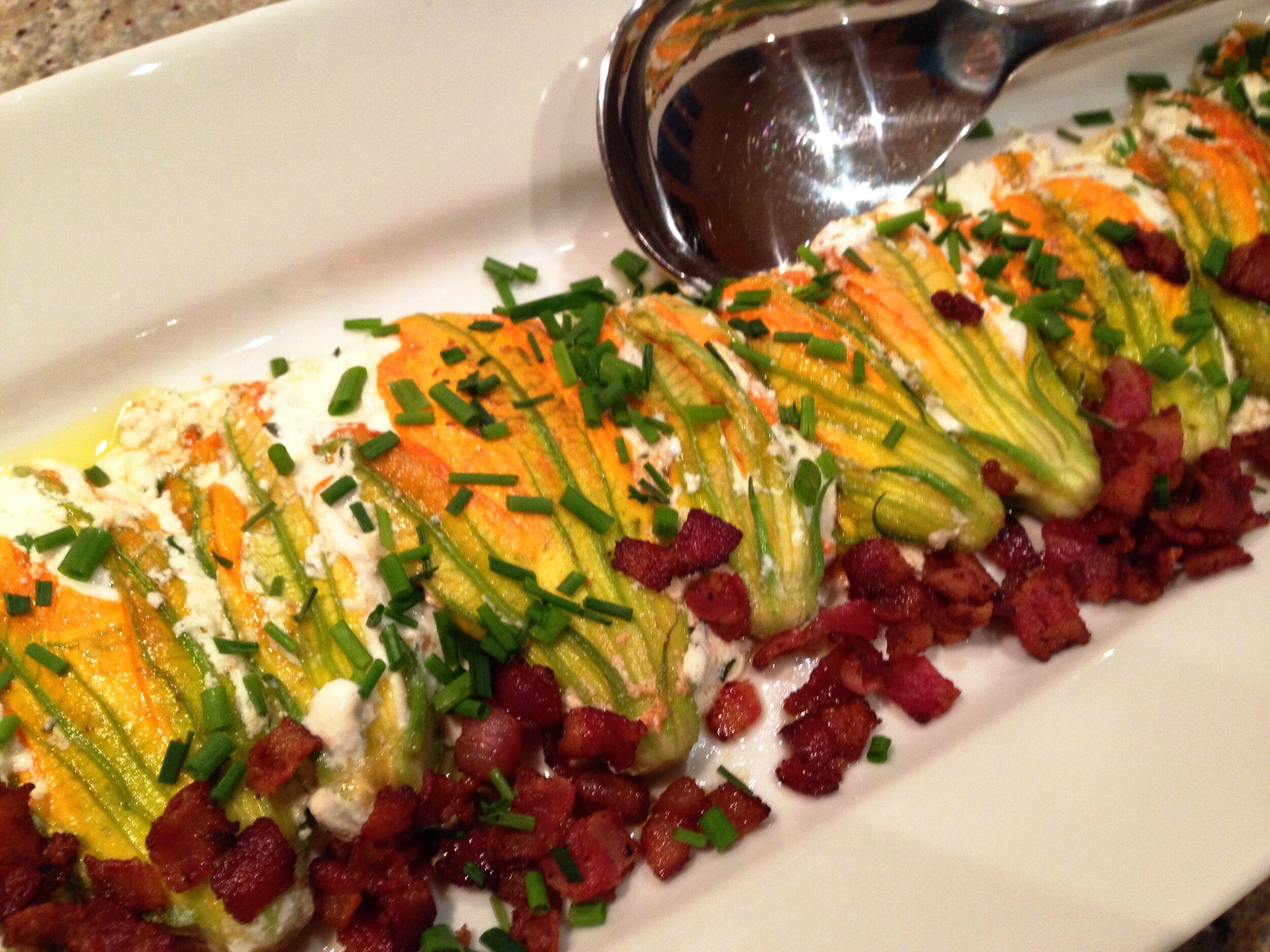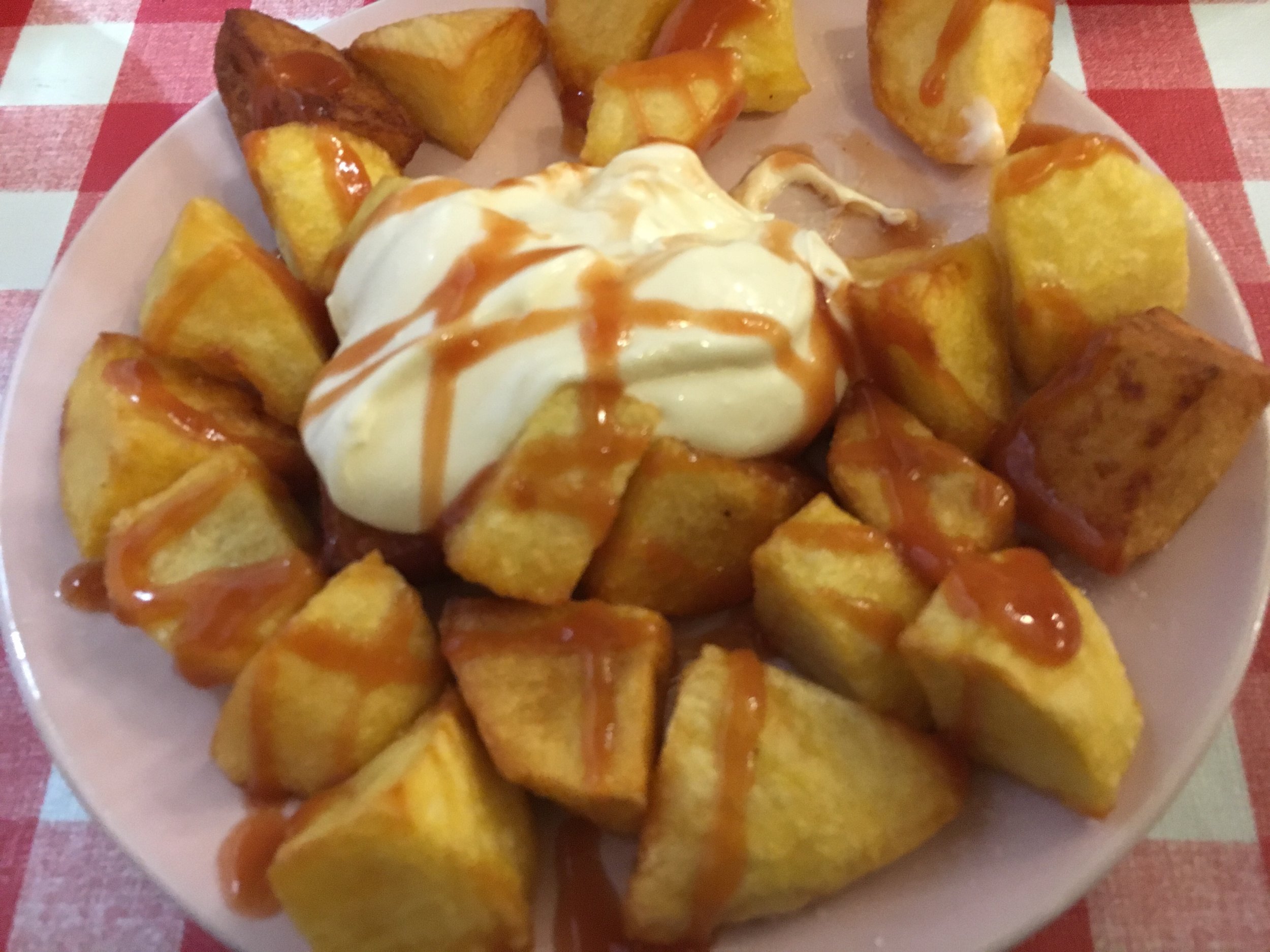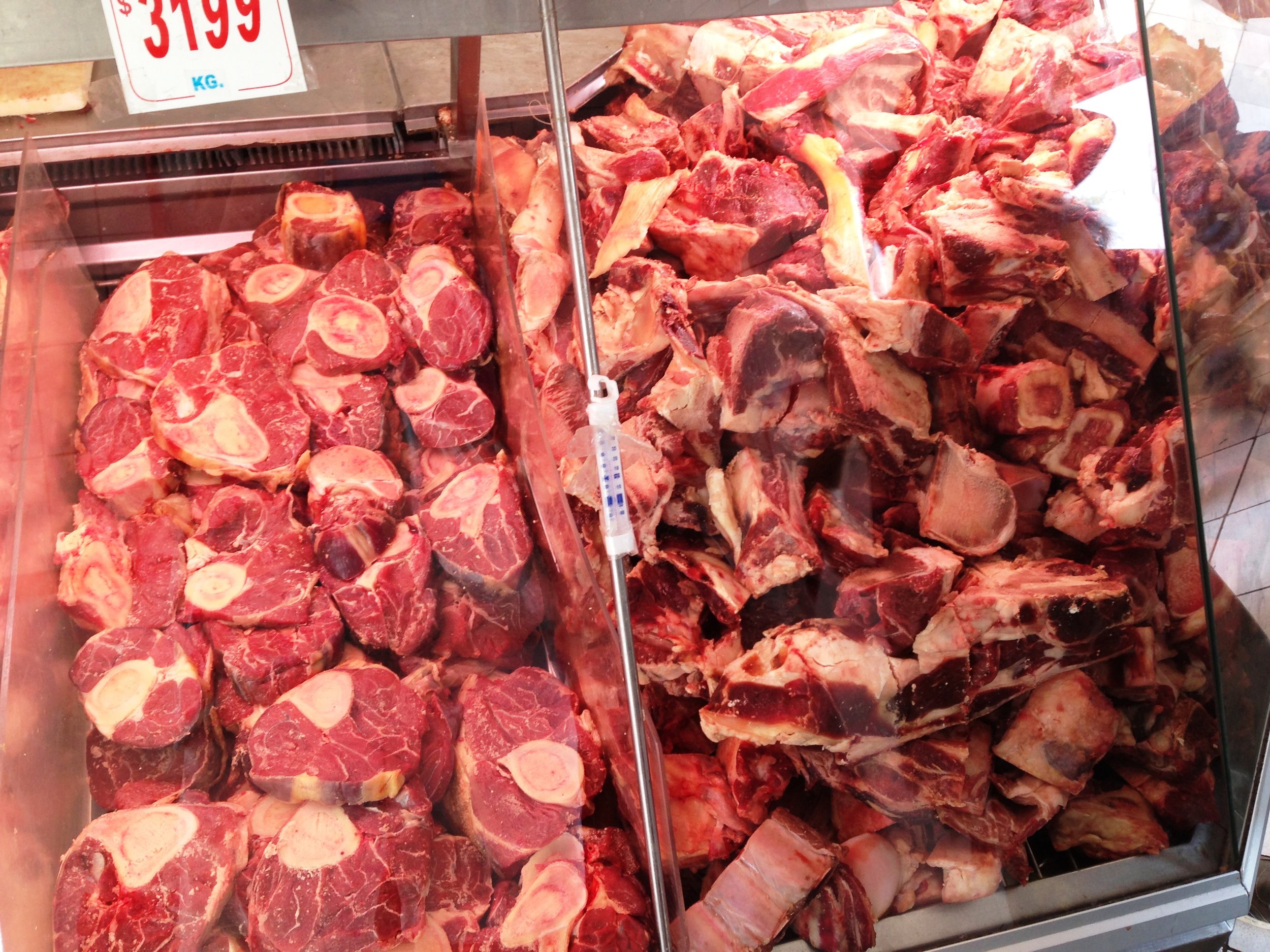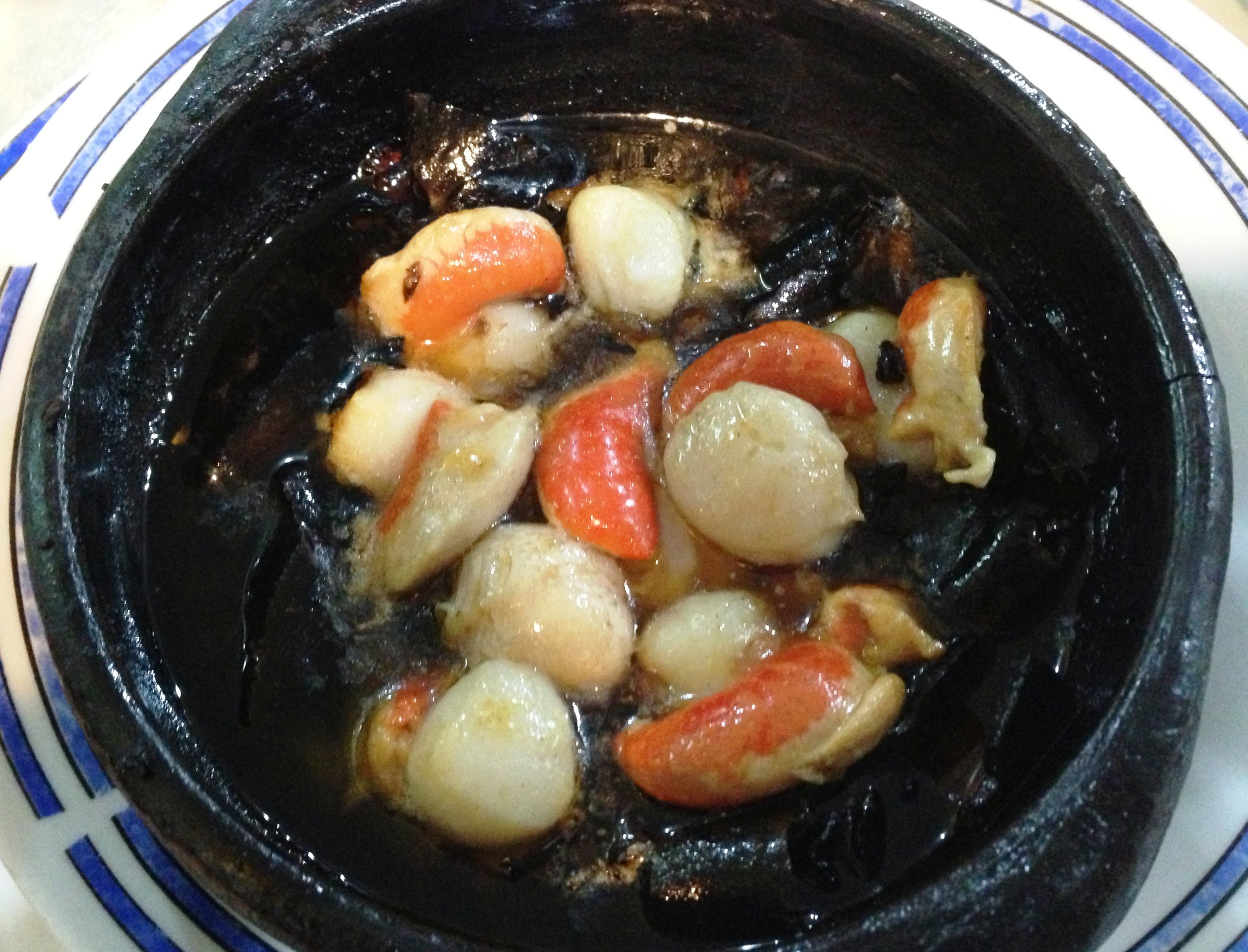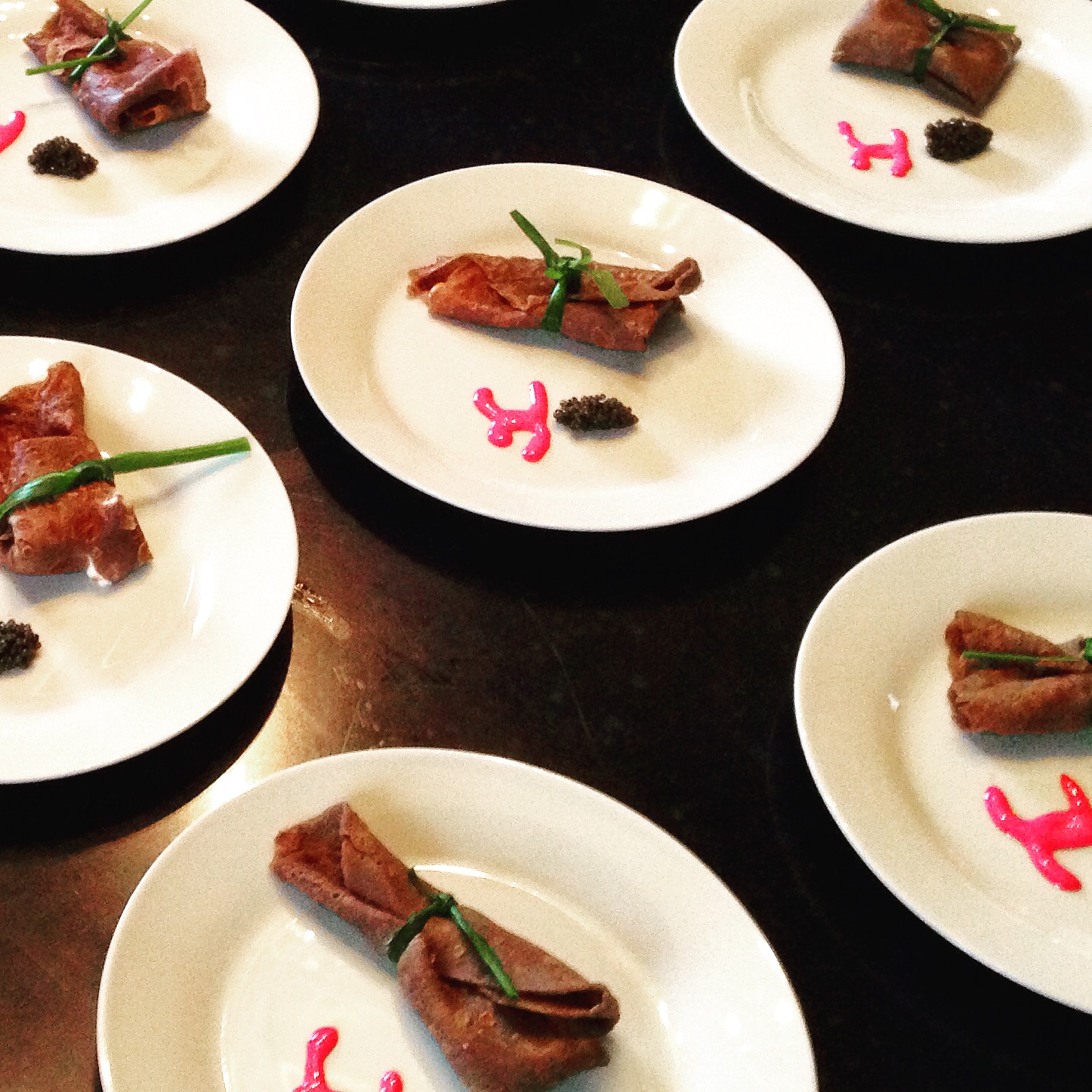I'm an October baby, and autumn is my favorite time of year (okay, besides the warmth and fun of the summer. That's pretty great too). Fall's many harvest-season gifts make it a pleasure to cook, and eat, now. What many people don't realize is that the popular ethos of "nose-to-tail" eating can be applied to vegetables as well. You don't need to eat the whole hog to go, well, whole-hog. Often the skin and seeds, roots and leaves of vegetables are just as delicious as the thing itself.
A trip to the farmer's market at this time of year is a revelatory experience, the changing colors of the leaves on the trees reflected in the market haul of reds and greens in apples and pears, oranges and yellows and umbers in all varieties of pumpkins and squash. The cruciferous vegetables of winter are coming in, even as Indian summer golden peaches are still being sold alongside them. This is the perfect time for what I call "whole vegetable eating" -- sometimes called root-to-fruit, or some such rhyming variation. What's most important is not what it's named, but how it's done. I'll give you a little help.
As the weather turns cooler, we look to root vegetables and foods that start producing in autumn to last us through the winter. We know that carrots and beets are healthy root veggies, but often the greens (or carrot tops, in the case of carrots) are overlooked, or worse, removed before we can use them. And they're delicious!
I love serving the Greek dish skordalia, which is a whipped potato-garlic puree (try this with purple potatoes!) along with roasted beets and wilted beet greens. It's the perfect dish served warm or at room temp, so it's incredibly versatile. And it looks beautiful as well.
For whole-vegetable eating with carrots, I love making a carrot-top pesto (with nuts and cheese) or salsa verde (with other herbs, capers, and scallions), and roasting the whole carrots, serving them drizzled with the sauce made from their greens. It's also a gorgeous presentation, and...no waste!
Just as we know these roots better than their stems and stalks, we know the stalks of celery and parsley better than celery root and parsnips -- though all parts of these veggies are tasty and worth exploring in their own right. I love using celery root raw, slicing it into a thin julienne and tossing it with homemade mayonnaise for celeriac remoulade, the simplest of French treats. And I love, especially during cold months, using celery root to replace potatoes by 80%, making a puree for all of the stews and slow-cooked braises I cook at this time of year.
Parsnips are another great substitute for potatoes, but they also provide a delicious pairing with roasted carrots -- they look a lot like white carrots anyway -- and their sweetness when roasted mimics that of carrots' sweetness, so they're great hit with a bit of acid, tossed in either a balsamic vinegar or some citrus juice before and after roasting. I also love a good celeriac or parsnip soup. They puree so nicely and they have a verdant undertone that potatoes don't. Again, they pair well with sweet and acidic, so I usually top off the soups with a maple gastrique or some kind of sweet-sour accompaniment.
Though usually summer squash is found -- you guessed it! -- in the summertime, you can usually find zucchini and yellow squash well into the fall in many markets. And often, the zucchini flowers are actually pumpkin flowers (fiori di zucca in Italian), so these are also a part of the pumpkin to be utilized in whole vegetable eating. We know we can clean and roast pumpkin seeds. Of course the flesh itself works for preparations from savory to sweet, and even the flowers of the pumpkins are a great gastronomic delight -- stuffed, fried, sauteed and tossed in a pasta or risotto. This is the definition of whole vegetable eating.
Stuffed zucchini flowers
My homemade gnocchi with cherry tomatoes and chive blossoms
And speaking of flowers, many people don't realize that most herbs go to flower if allowed. Usually, for the purpose of the herb itself (which is generally comprised of a leaf), we pick the leaves before they go to flower -- but not always. And the flowers can be an intensely flavorful and beautiful form of the herb itself. I love snipping chive blossoms into salads and main courses, adding a burst of purple color to otherwise monotone dishes. The coriander flower (cilantro is the herb, and coriander as a spice is the dried seed) is also a lovely floral version of an already fragrant herb. I remember the first time I saw prodigious use of coriander flower to transform dishes from simply delicious to ethereal, by chef Iñaki Aizpitarte at Paris's excellent Le Chateaubriand restaurant. I always note the innovation of a chef when she or he uses all parts of produce so that nothing is wasted, and we get many different aspects of the primary ingredient's flavor profile at once. It's something I try to practice in the kitchen as often as possible.
In this approaching season of cold weather and soup-eating, there's no better opportunity to practice whole vegetable eating than by making a vegetable stock out of any and all vegetable trimmings and scraps you have on hand from making any produce preparations. Just toss all the "unwanted" parts into a large stock pot, cover with water, and keep it going on a low rumble on the stove for hours on end. Skim the scum (yes, that's the actual technical name for the discolored bubbly foam that should be discarded from any stock preparation) and then just ladle out what you need from the pot. The stock will continue to get richer with time.
Happy Harvest Season, everyone. Enjoy your autumns!










